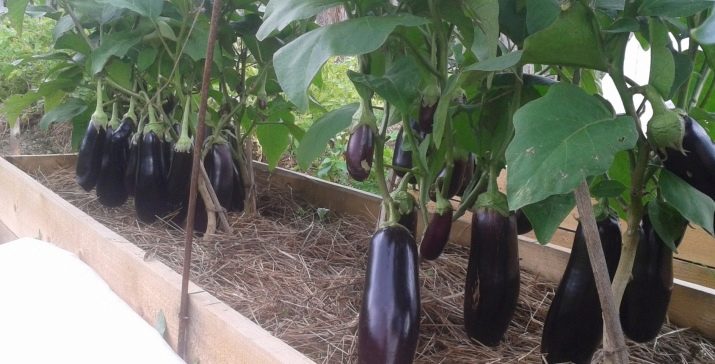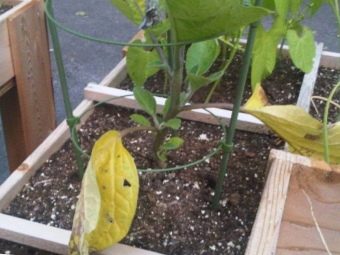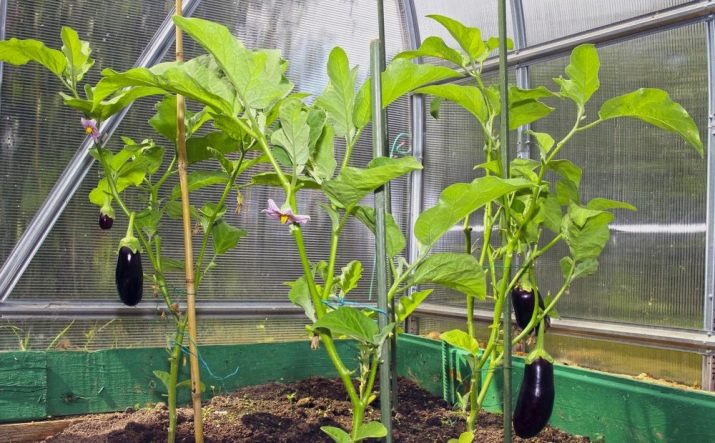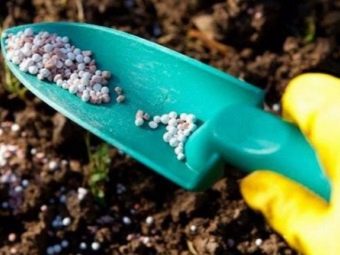Why do eggplants turn yellow leaves?
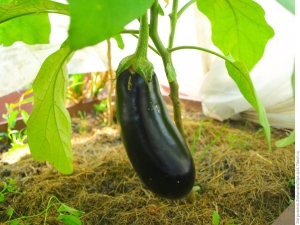
Eggplant is a very picky culture.One of the most common problems faced by gardeners when they are grown is the yellowing of the leaves. In this case, the first thing to do is to find out for what reason this trouble occurred. Only after that you can begin treatment, which will be different in each case.
The reasons
Many are interested in the question of why the leaves turn yellow and eggplant. This phenomenon can often be observed in peppers, especially if they grow together in open ground or in a greenhouse. In addition to yellowing, they may appear spots and points, the seedlings wither, the fruits do not grow well, the greens dry and, as a result, they quickly fall down. This means that the plant is bare, and eggplant grows poorly, in some cases, not having time to bloom and give fruit. It is worth considering the most common causes of this disease.
Diseases and pests
Sheet mosaic is a disease, the course of which is reflected in the fruits, making them very solid. It looks like yellow specks, dotting the upper part of the leaves, with the spots have an irregular acute-angular shape. First of all, light halos appear along the plate, after which they become more and more, until the entire surface of the sheet is filled. Especially often leaf mosaic is found when growing eggplant in greenhouse conditions.
It can be provoked by insufficiently good or, on the contrary, excessively strong illumination, sudden changes in temperature.
Eggplants themselves in this disease grow deformed, often underdeveloped. It should be borne in mind that the mosaic is a virus, and therefore can not be treated. In this case, the only way out is to remove the affected plant and burn it, otherwise the disease may spread further. Sheet mosaic looks like a lack of magnesium. It is quite simple to distinguish it, for this it is necessary to treat the leaves with universal microfertilizer. A non-concentrated solution of magnesium nitrate is also suitable. After the manipulations, you should wait a week, if the plant did not feel better, it means that it was struck by a virus.
Another disease is fusarium. Its danger lies in the fact that you can lose all the landing completely. First, the disease affects the leaf vessels, which leads to their yellowing and falling off, after which the shoots begin to wilt. With this disease, the leaves turn yellow, starting from the edge, and then curl up into a tube and dry. If Fusarium turns into a chronic stage, the fruits are of irregular shape, and the plant itself is depleted and fruits less efficiently.
The manifestation of the fungus is often confused with this disease, since there are no visually significant differences.
The difference lies in the fact that the fungus is initially present in the soil, after which it infects the plant, with its active growth, eggplant dies. In fungal diseases, leaves are affected by spots that do not completely cover the leaf surface. For example, late blight is a brown spot surrounded by a light green border, alternariosis is characterized by a scattering of small brown patches, and anthracnose is brown spots that have an oval shape. The lower leaves may turn yellow due to the fact that the seeds were initially infected, so you need to remember that the plants require competent care. The fungus is especially actively distributed in a humid environment, so you need to regularly air the room where the seedlings are located.
Due to an oversupply of additional fertilizing, especially such as organic fertilizers and nitrogen, eggplant can develop a disease such as verticillis. It can accompany the plant at all stages of its development. Another unpleasant and common problem with eggplants is the spider mite. The impact of this pest also causes the leaves to curl and dry.However, this parasite is quite easy to calculate, you just need to use a flashlight and magnifying glass, with their help you need to carefully consider the seedlings.
Improper care
It is necessary to take into account that eggplants very painfully tolerate the transplantation process, if the leaves of the plant curl or yellow spots appear on them - this may indicate a period of adaptation. After some time, the culture will be mastered, the greens will return the same rich color. The process of planting should be carried out as carefully as possible, protecting the roots from damage. It should be borne in mind that if the eggplants are planted in improper soil, there is a risk of destroying the plant, and best of all they take root in sandy or loamy soil. In addition, shade, low temperatures at night, as well as moisture deficiency will negatively affect the plant. The only solution is to provide proper care to the finest culture.
Lower cotyledon leaves can dry due to the fact that the plant has a deficiency of nutrients.
To get rid of this will help only feeding a special fertilizer for seedlings. The soil, fed with various types of fertilizers, should be freed from weeds, then loosened. It is useful to add sawdust, but not fresh, and stale, having a dark color. Sour soil only hurts eggplants, as does using fresh manure to fertilize the soil. If you choose a place where planting has already grown, you should exclude the soil for tomatoes, peppers and potatoes, but cucumber and cabbage beds are a great solution.
With regard to growing in greenhouse conditions, a frequent cause of yellowing of leaves is the burn of their surface, caused by improper installation of lighting devices. Landing in open ground may also be accompanied by this problem, since direct sunlight can burn young and tender shoots. In this case, you need to take into account that watering should be done strictly in the evening and morning hours, so as not to provoke a burn. In addition, eggplant can not be poured, as well as dried, and even the culture does not like cold water. This process also requires enhanced control.
Whatever it was, but an excess of fertilizer can also negatively affect the growth of eggplant. The cause of stains, among other things, can be potassium calcium nitrate. It should not be used too actively. In this case, the solution of potassium permanganate will help. And also it is possible to process greens with the composition, including citric acid and iron sulphate.
Treatment methods
Before treating the plants, it is necessary to identify the problem. Only in this case, the conducted manipulations will be effective. With regard to the deficiency of nutrients, in most cases it is enough to enter feeding. For example, with nitrogen starvation, urea will help in proportions of 1 tablespoon per bucket of water, mullein - 1 liter for the same volume of liquid, chicken manure - 0.5 liters, respectively. In cases where the procedure did not help to achieve the desired effect, the treatment needs to be repeated, but not earlier than in 2 weeks. It should be borne in mind that excessive fertilizing in this case can do harm, since the main power of the plant will go to build up strong greens, while the fruits will not be given proper attention.
With potassium deficiency, it is possible to use ash as a top dressing, preferably herbal, and also potassium sulfate or monophosphate. In this case, it must be borne in mind that potassium is much worse absorbed at high temperatures, which often happens in greenhouses. Only one way out - to air the room more often, to whiten the roof, to reduce the amount of nitrogen. With a lack of zinc, the leaves visually look the same as when a fungus develops, the damage goes from the bottom up. The process can be stopped if the plants are treated with zinc sulfate and phosphorus-containing fertilizers. If the plant lacks micronutrients, it can be seen on the yellowed upper leaves.The problem can be solved with the help of complex organic microfertilizer.
As for the parasites, most often they are visible to the naked eye, so a visual inspection is required periodically. The spider mite, aphid, whitefly and mushroom mosquitoes cause the most trouble. Whiteflies, like aphids, prefer the sap of the plant, which they suck from the leaf, and the mushroom mosquitoes feed on the root system, having a destructive effect on the growth of the vegetable. The first thing that gardeners recommend for getting rid of pests is to spray the seedlings with a solution of water and laundry soap. If the procedure was not effective enough, you can spray the plant again. In addition, it is useful to water the plant "Aktar" or sprinkle with "Flyoverm". The mushroom mosquito is also afraid of the usual "Dichlorvos."
Prevention
In order to prevent such problems as yellowing of the leaves of eggplants, it is necessary to carry out a number of preventive actions. The first step is to properly transplant plants. After that, you should do their feeding. Comprehensive fertilizer is used 2-3 weeks after the seedlings are planted in the ground. In a bucket of water you need to add 2-3 tablespoons of fertilizer, after which you need to water the bushes. On one bush you need about 0.5 liters of solution.
Further actions are performed when the plants begin to bloom. As an organic fertilizer, you can use a mullein in a ratio of 1: 10, as well as a herbal infusion of 1: 5. Chicken manure is taken no more than in a ratio of 1:20. When the eggplant begins to bear fruit, it must be fed again. For this, ash, potash salt, as well as any other phosphate or potash fertilizers can be used.
Useful tips
When the reason is determined for which the eggplant leaves turn yellow and wither, you need to start the fight without delay.
Seasoned gardeners give some tips on how to minimize the physical and material costs in this process.
- First of all, they recommend to plant the eggplants properly. It is necessary to pre-disinfect the seeds, select the soil that is suitable for this particular culture, as well as decide on the area where there will be enough sunlight. To get rid of the fungus, when planting in the wells should be added "Trichomerdine."
- Timely feeding will help provide the seedlings with the necessary beneficial ingredients that will affect its growth and general condition. In this case, the main thing is to adhere to the instructions that manufacturers place on packages with fertilizers.
- For watering should use only warm water. The procedure should be carried out in the morning or in the evening, but not in the hot time of the day and under the scorching sun.
- If the individual instances show signs of disease, they must be removed in time to prevent infection from spreading to other shoots. And also need to periodically inspect the eggplant, to eliminate the visual manifestation of disease.
- Land should be loosened from time to time. This will help saturate the soil with air and moisture, which has a beneficial effect on plant health.
Why turn yellow leaves on eggplant, see the following video.

